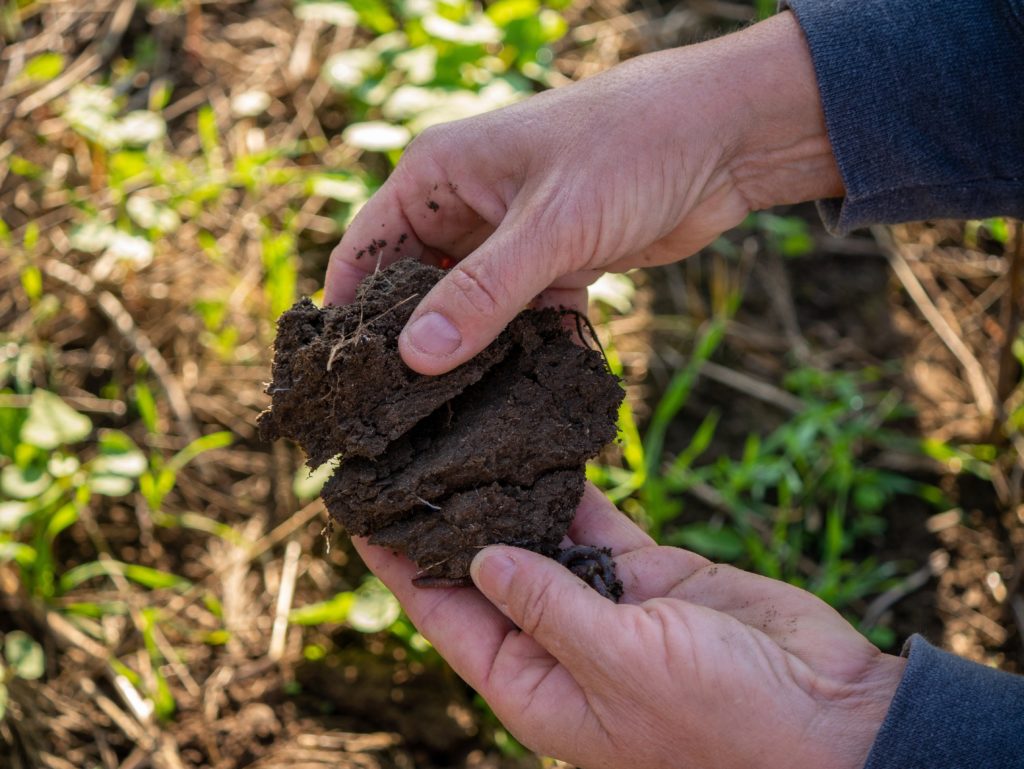Hargreaves, S.K., P. DeJong, K. Laing, T. McQuail and L.L. Van Eerd. 2019. Management sensitivity, repeatability and consistency of interpretation of soil health indicators on organic farms in southwestern Ontario. Canadian Journal of Soil Science. doi:10.1139/CJSS-2019-0062.
Research summary by Aidan O’Brien
Key Messages
- This study assessed how well different soil health measurements allowed farmers to track soil health on their farms, using data from three organic farms in Ontario.
- Active carbon (C) and soil organic matter (SOM) were identified as the best measurements for predicting soil health in a sensitive, repeatable and consistent way.
There are many different soil measurements available for farmers to use to track soil health. However, there is little to no information on how useful these measurements are on working farms. For a measurement to be useful, it needs to be sensitive to differences between fields, reliable (or repeatable) in getting the same results again and again, and consistent in how it ranks the health of a farm field from one farm to the next. In this study, the authors compared the sensitivity, repeatability, and consistency of interpretation among popular soil health measurements.
What they found
Not all soil health measurements are equal in the usefulness of the information they provide to growers. The authors found that active C and SOM were the only measurements that were sensitive to differences between fields growers perceived to be productive and unproductive, consistently ranked them in this order, and required few samples in order to get this proper ranking. Active C represents carbon in the soil that is readily available and easily used by microbes. SOM indicates the amount of carbon in more stable forms and contributes to storage of carbon in the soil.
Why it matters
Identifying soil health measurements that allow farmers to track progress from a “bad” field to a “good” field may empower growers to build soil health. Although the results are limited to three organic farms in Ontario (vegetables, hay, and pasture), this study showed that active C and SOM provided sensitive, repeatable and consistent results and, therefore, are the most useful soil measurements for growers to track soil health. Other research supports the usefulness of active C and organic matter, so we don’t have any reason to think active C and SOM wouldn’t be useful for field crops and non-organic systems.
What they did
Three organic farmers worked in cooperation with the Ecological Farmers Association of Ontario’s Farmer-Led Research Program. The Dundalk and Lucknow farms compared three fields: an undisturbed reference site, a site of grower-perceived high productivity, and a site of grower-perceived low productivity. The St.Thomas farm only compared two fields: a reference site and a site of grower-perceived high productivity. At each farm, 10 soil cores were collected from five locations at each of the selected fields for a total of 150 samples from each of the Dundalk and Lucknow farms (3 fields x 5 locations x 10 cores), and 100 samples from the St.Thomas farm (2 fields x 5 locations x 10 cores).
The soil samples were analyzed using commercially available soil health tests: the Haney Soil Health Test which measures SOM, pH, respiration, extractable nitrogen, carbon, and other nutrients that would show up in a basic soil test; and two measurements from the Cornell Soil Health Laboratory, active C and wet aggregate stability. A statistical test called a Power Analysis was used to determine which measurements were most sensitive, repeatable, and consistent at predicting soil health.


